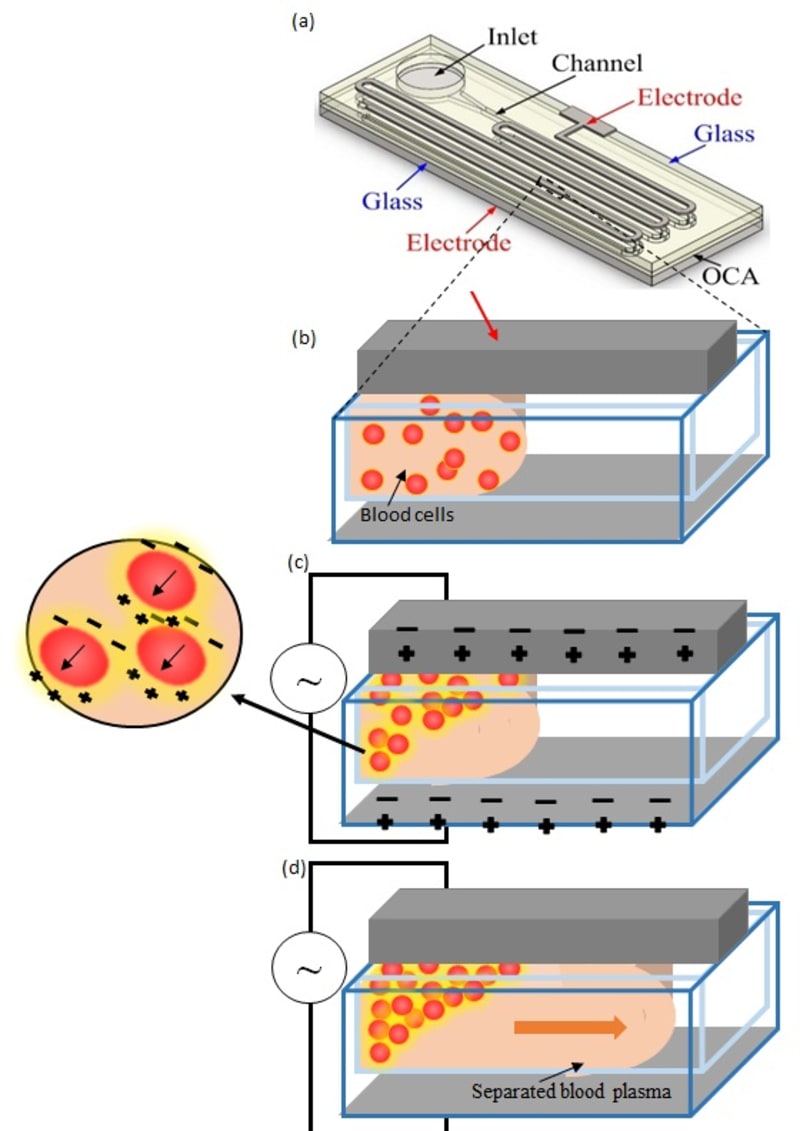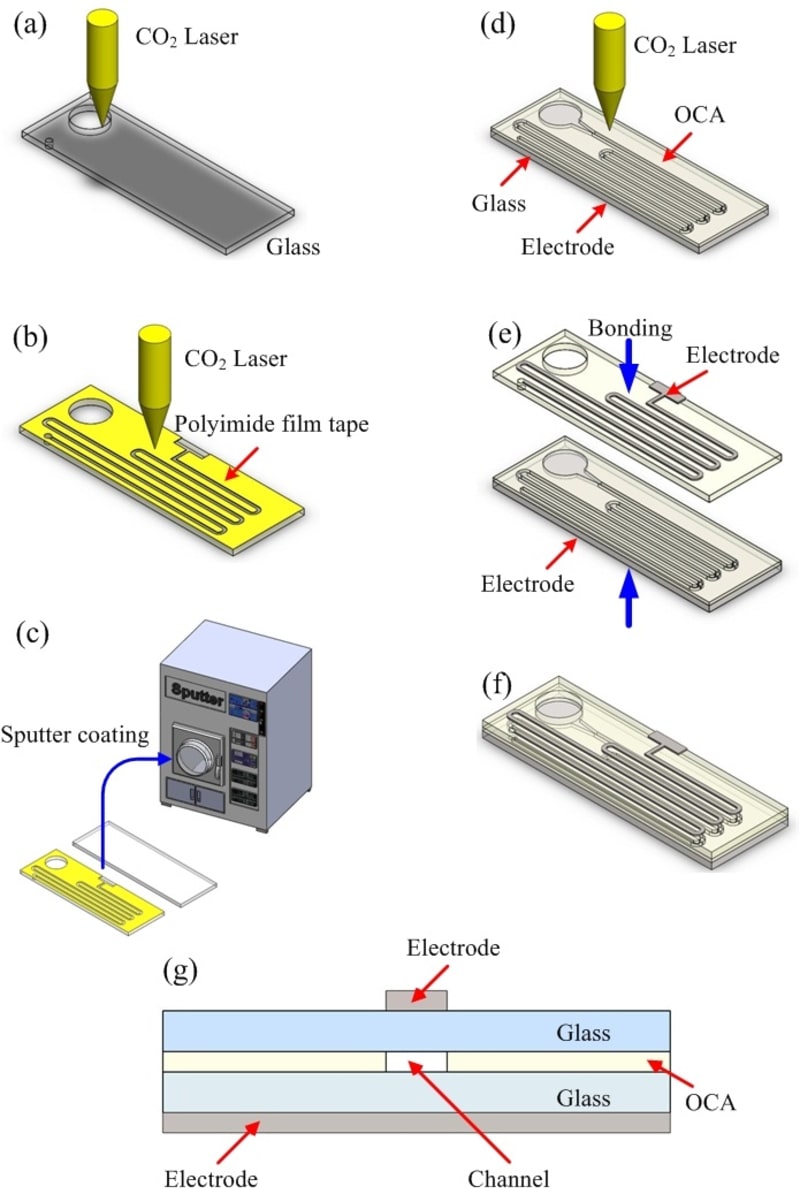
Many microfluidic devices for plasma separation from human blood samples have attracted numerous researchers to develop for point-of-care medical health diagnosis in the future. However, most microfluidic methods required external mechanical driving sources such as a syringe pump and the tube connections between devices and their driving sources. They are not convenient for point-of-care applications and extra energy needs dissipating for driving components. Some dielectrophoresis force can be used for manipulation of microscale and nanoscale particles together with blood samples. But the DEP technique required diluted blood samples and the contact of the samples with the electrodes. The applied voltages were high mostly over 100 V which could damage the red blood cells (RBCs) and the hemoglobin released from ruptured RBCs polluted the separated plasma. The high voltage applied may also cause electrochemical effects, bubble formation, and the detrimental effect of joule heating in the sample.
Here, we have designed and demonstrated the portable, disposable, capillary-driven and low-voltaged (~1 V) contactless dielectrophoresis microfluidic chip which can be used for the undiluted whole blood plasma separation together with undamaged RBCs and no hemolysis under low voltage operation. The volume separation efficiency was about 69.8% and the separation quality (removal rate of RBCs) was about 89.4%. It will be extended to be the point-of-care biomedical diagnostic devices for the analysis of Coagulation Time (CT), Prothrombin Time (PT), Activated Partial Thromboplastin Time (a-PTT), Triglyceride (TG), Total Cholesterol (TC), Low/High Density Lipoprotein (LDL/HDL) and so on linked to human health diagnosis and treatment. The detailed plasma separation principle and function of our chip is acknowledged to the first publication of the work by the RSC (http://pubs.rsc.org/en/content/articlelanding/2014/lc/c4lc00196f#!divAbstract) and selected as the Front Cover (DOI: 10.1039/C4LC90044H).
Answers below to:
• What problem does your design idea solve? The low-voltaged (~1 V) capillary-driven contactless dielectrophoresis microfluidic chip can be used for the undiluted whole blood plasma separation together with undamaged RBCs and no hemolysis under low voltage operation.
• What are the potential benefits? This chip will be extended to be the point-of-care biomedical diagnostic devices linked to human health diagnosis and treatment.
• How is your idea novel or an improvement on what is currently available in the marketplace? This chip separates plasma from undamaged RBCs and no hemolysis. It is easy and convenient for use because it doesn’t need external mechanical driving sources and the tube connections between devices and their mechanical driving sources
• Where would this idea be applied? The point-of-care biomedical diagnostic devices.
• What is the market potential? The potential market is for future point-of-care analysis of CT, PT, a-PTT, TG, TC, LDL/HDL and so on linked to human health diagnosis and treatment.
• How does your design work? See “Lab Chip, 2014,14, 1996-2001”.
• How would your product be manufactured? See “Lab Chip, 2014,14, 1996-2001”
• How would the production cost compare with products already in the marketplace? All materials are chip and if mass manufactured in future it could be less than US$ 1 per chip.
-
Awards
-
 2014 Top 100 Entries
2014 Top 100 Entries
Like this entry?
-
About the Entrant
- Name:Chenkuei Chung
- Type of entry:teamTeam members:C.K. Chung, C.C. Chen and P.H. Lin
- Patent status:pending





